
Celebrating the Art and Sport of Pinball
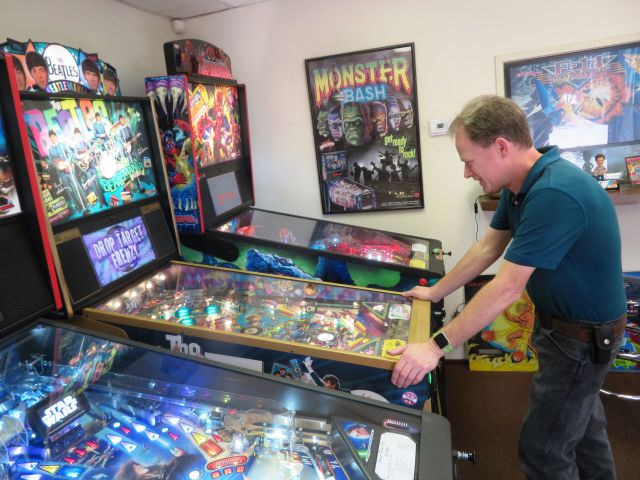 |
|
|
Coin-operated games using springs to shoot balls around a playing field had been popular since the early 1930s, but it was not until the mid-century era that the game as we know it today emerged – thanks to the invention of flippers.
For those who don’t play, finger-operated flippers catch balls before they fall out of play and fling them back onto the playing field to carom around targets, cause lights to flash and sounds to sound – and points to pile up.
But surprisingly, perhaps, most mid-century games never had a mid-century modern look, says Chris Kuntz a “very, very good player, because he does it all the time,” in the words of his associate, Jeannie Rodriguez, who also runs the warehouse-sized Pinball Pirate in industrial Benicia, where you can buy vintage and new machines and repair your ailing coin-operated games of almost any sort.
Right now Kuntz and crew are readying for one of the great events for pinball fans, the Golden State Pinball Festival to be held May 17 to 19 in the Wine Country town of Lodi. Kuntz will bring 15 to 18 machines, both vintage and new.
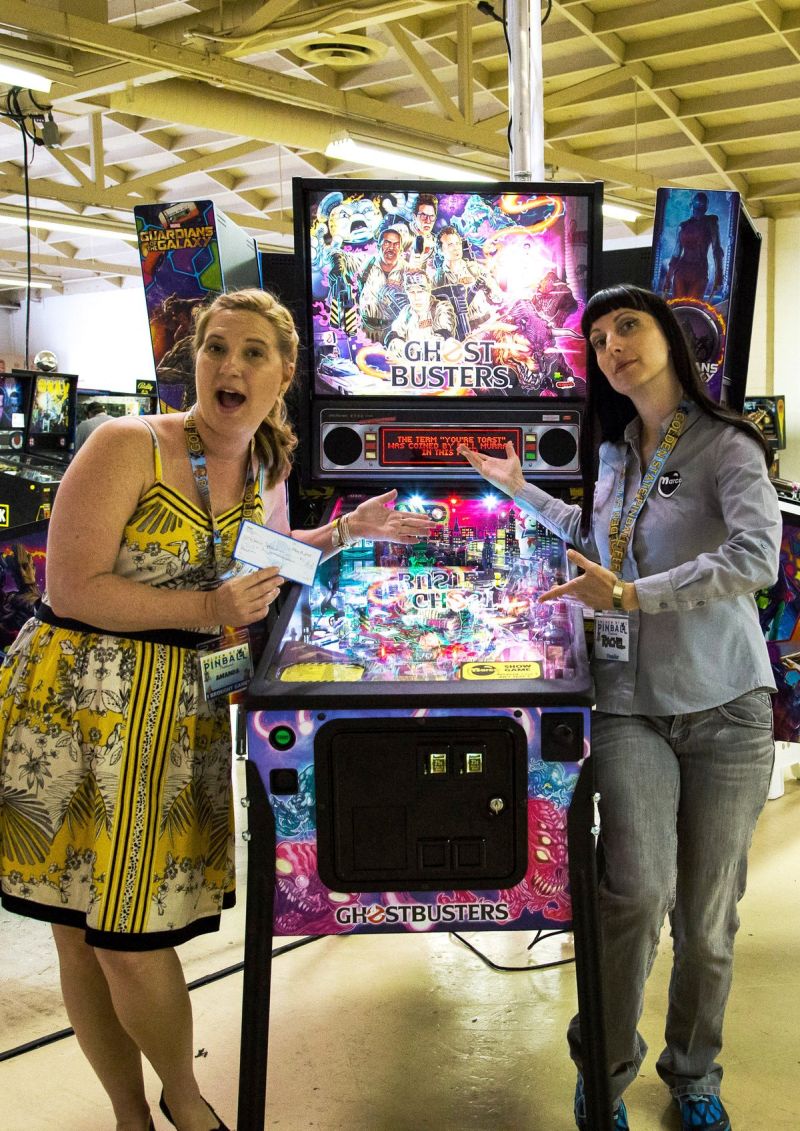 |
|
|
Last year the event, one of the largest pinball-only festivals in the state, attracted about two thousand, from families with kids to casual players “who don’t even own machines,” to “pinheads,” as true fans are called, says Seth Holden, board member of the sponsor, the Northern California Pinball Association.
“Our mission is to let people know this hobby exists and to keep it healthy and going into the future,” Seth says. The festival organizer is a nonprofit. Proceeds from the festival will go to the World Of Wonders Science Museum in Lodi.
“We have 500 volunteers who run the show. We don’t make a cent. We don’t make a dime. It’s all about pinball and helping a kids' charity.”
Serious players will be there for tournaments, including competitors who study the details of each game. With multiple-level playing fields and plastic bridges, it’s a lot more complicated than miniature golf.
But the festival also attracts casual fans who get to play 350 machines, some going back to the 1940s and each set for free play. The festival also attracts fans of the popular art to enjoy the often wild drawing and colors that decorate the playing field, the upright “backglass,” and the sides of the machines.
Pinball is enjoying its third golden age, Seth says.
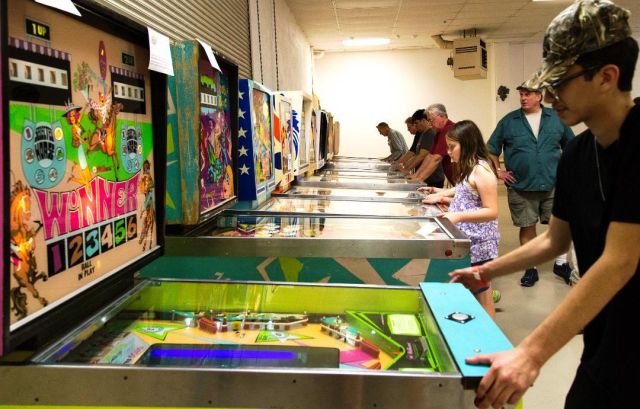 |
|
|
Where once there was only one manufacturer, he says, today there are at least four (manufacturing in Chicago, Wisconsin, and New Jersey, for you made-in-America types). Where once players would discover a new machine by spotting one in the neighborhood bar, today fans scour the web for new releases.
“People travel hundreds of miles to see the new prototypes,” Chris says.
Wondering where to go to try a machine that’s new to you? Try the Bay Area Pinball Map. Think you’re getting good with the flippers? Play in a tournament, join a league.
And maybe you should start playing before the boom becomes a bust, as it did in the early 1980s when Donkey Kong and other early video games displaced pinball, ending pinball’s golden age of the 1970s.
Pinball peaked again in 1992, says Chris, who’s been in the pinball business for three decades. But then the sport declined again.
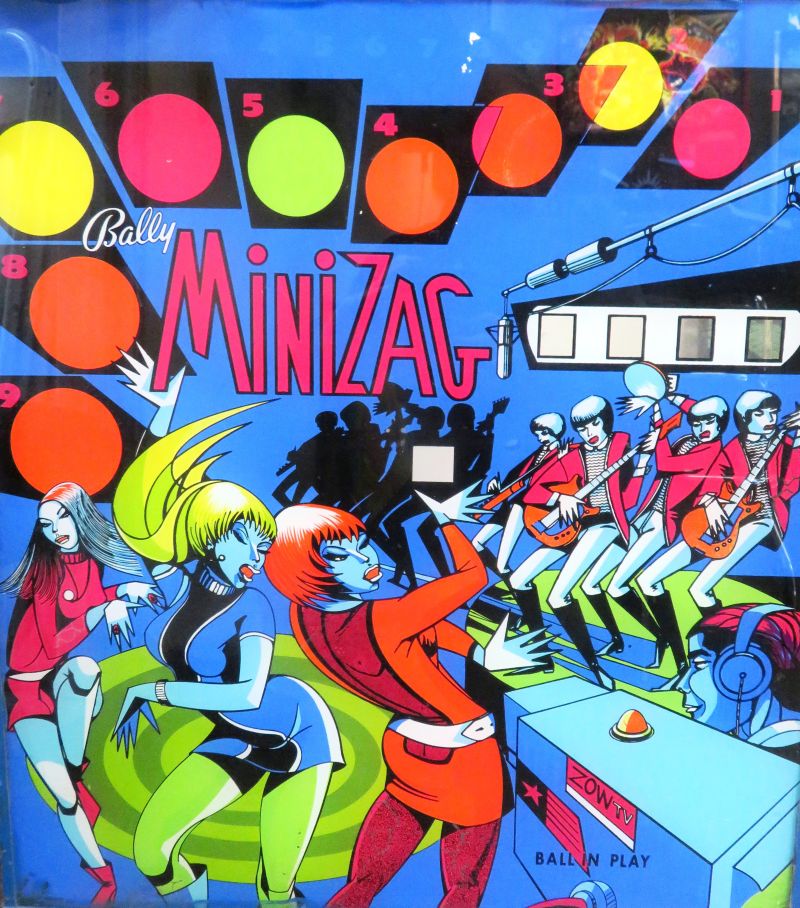 |
|
|
“It’s a generational thing,” Chris hazards, saying that his interest grew during the boom of the 1970s.
Even people who don’t play pinball – but try it, it’s addictive in a good way – can enjoy the art. Today, Chris says, almost all new machines use 'licensed' themes from TV shows and the like. Back in the day, themes ranged from outer space to bowling to Chicago’s Hyde Park.
But it wasn’t till the late 1960s and early ‘70s that what we see today as the mid-century modern style hit pinball machines, Chris says.
The manufacturers were conservative in that regard, he says, singling out one big maker, Gottlieb.
Also adding to an old-fashioned look was the structure of the machines, of wood. For about 18 months at the start of the 1960s, he says, one firm produced a modern-looking cabinet with aluminum legs
“They called it ‘the style of the 60s,’” Chris says” “It was much more Jetson-esque.”
Then in the late ‘60s, an artist named Jerry Kelley, followed by a more prolific artist, Christian Marche, came out with wild, modern designs for playing fields and backglass that featured highly stylized, abstracted designs, with people portrayed as a series of angles.
“Pinball people call it the ‘Pointy People’ style,” Chris says. He adds, “Some ‘70s games look like they would come from the 50s.”
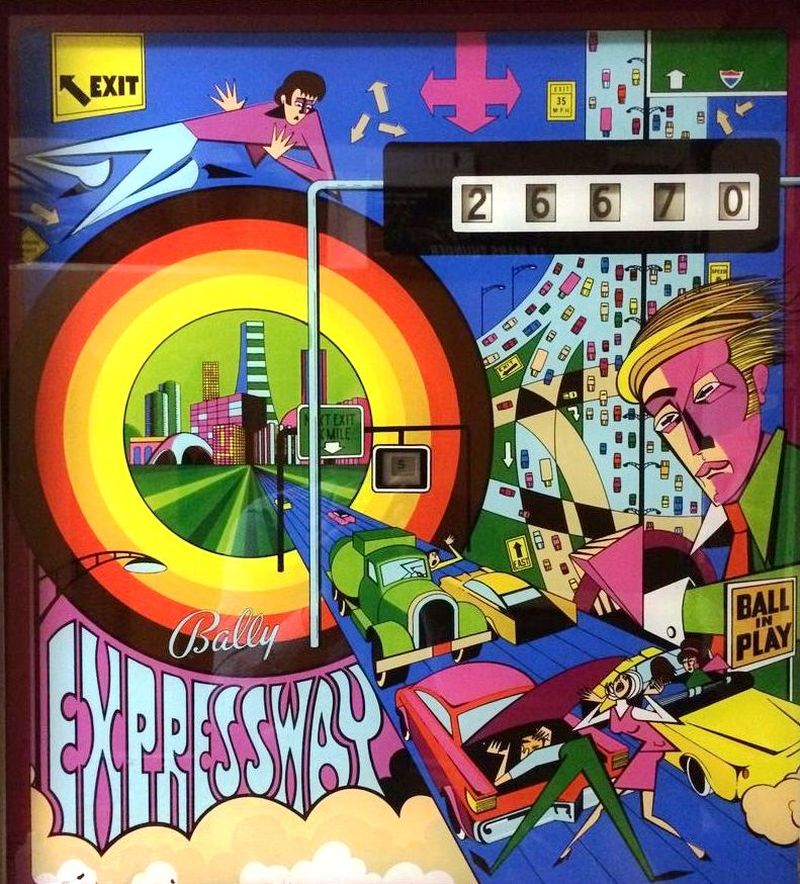 |
|
|
“The modern look had moody colors, not all sunny days,” Chris says. It fit the mood of a nation convulsed by Civil Rights and the Vietnam War.
“[The manufacturer] Williams even did a game called Suspense, with eerie art work. It wasn’t, ‘We’re bowling!’ Or, ‘We’re playing baseball!’ ”
The mid-century, retro look continues today, Chris says – stopping to play one good example, a new Beatles-themed game.
“To modern sensibilities, most people don’t like playing the old [games] so much,” he says. “But there are games you can go back to from then, and they are still fun."
Today, he says, many machines “are sold to people to have in their homes. It’s something they’re going to own for decades." They want games that provide new experiences the more you play them.
“A good game," Chris says, "you’ll keep coming back to.”
- ‹ previous
- 122 of 677
- next ›



